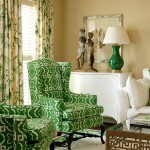The color green is one of the most familiar colors to the human eye; which isn’t surprising because it occupies the more space than any other color in the visible spectrum. Psychologically, green has soothing and calming effects, has been shown to alleviate depression, anxiety, and nervousness, and can physically improve readability.
Although green is sometimes associated with negative things, such as being “green with envy” and evil witches being green, across cultures, the color has mostly positive connotations. In Portugal for example, it signifies spring. In Scotland green symbolizes honor, and in China, it is emblematic of virtue and beauty. The deployment of the environmental movement further increased its use in public space and has positioned green as an excellent color to embrace for its revitalizing and modern qualities. When using green to convey a message, be aware of its’ characteristics. If applied incorrectly it may become bland. To convey your message, use this kind and tranquil color with due respect of its characteristics, because if applied incorrectly it may become bland or communicate boredom.

Facts:
- Green is used in night vision goggles, because the human eye can discern the most shades of this color.

- Green is popular in recreational clothing and interior design
- Green’s complementary color on the RGB color wheel is magenta.
- Green is increasingly used in web design, and when used correctly can draw attention to a call-to-action on a webpage.
